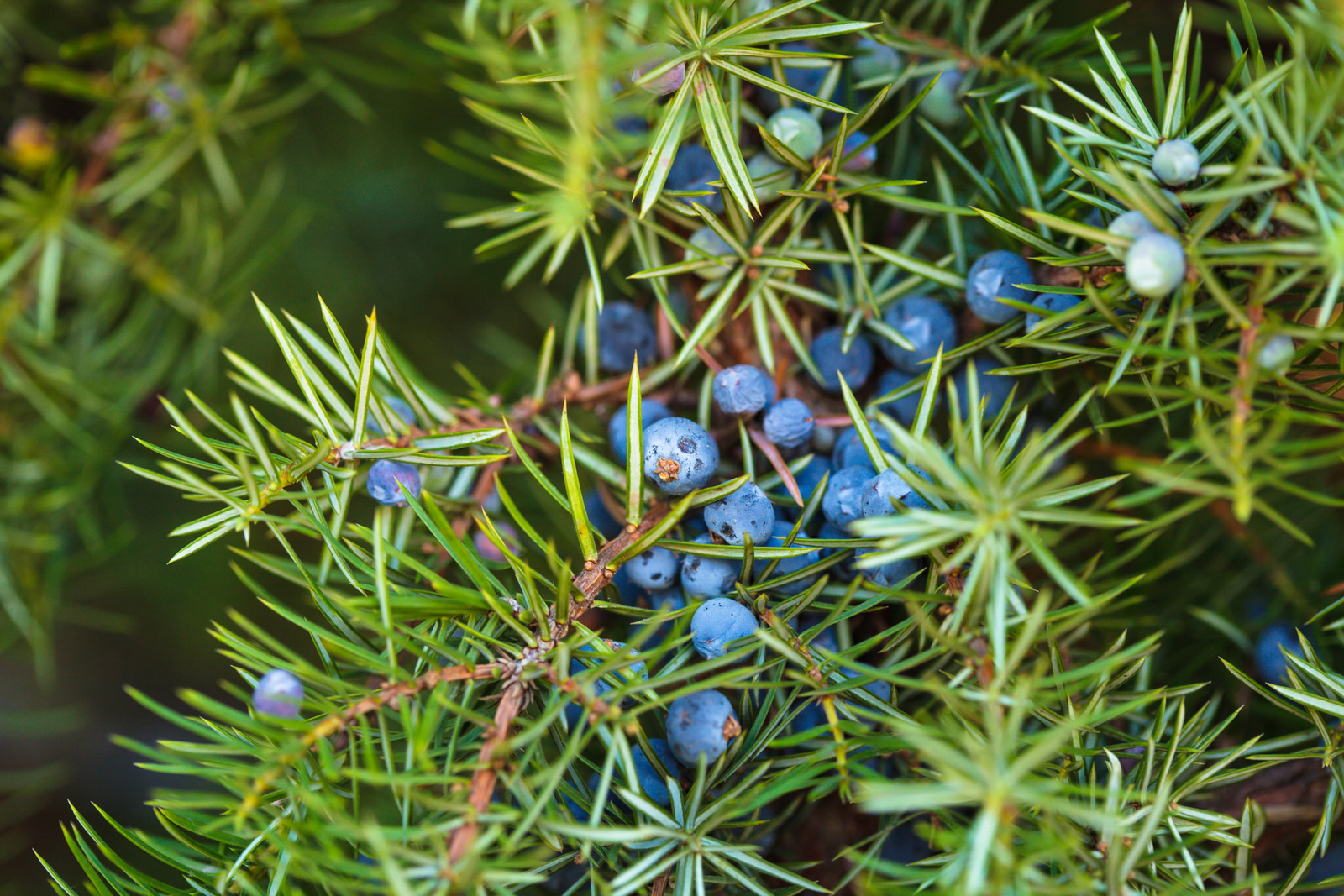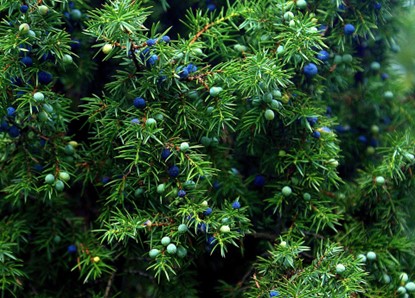
The juniper is a shrub or tree with the largest geographical area among woody plants, coniferous, evergreen. The habitat of the plant is very variable, ranging from spreading shrubs to large trees, depending on the species. As an example, the common juniper only grows up to 0.8 m in height. The fruit is edible, used as a flavouring in sauerkraut, vegetable pates, etc. and is the main ingredient of gin. Many forms of this species are excellent ground cover plants for sunny situations. Juniper is an evergreen shrub that grows up to 9 m at a slow rate.
Juniper tolerates cold climates and it is not sensitive to frost. It is leaf-shaped all year round, blooms from May to June and the seeds ripen in October. The species is dioecious (individual flowers are either male or female, but only one sex is found on any one plant, so both male and female plants should be grown) and wind pollinated. The plant is not self-fertile. It is suitable for: light (sandy), medium (loamy) soils, prefers well drained soils and grows late on heavy clay and poor nutrient soils. It can grow in slightly acidic, neutral and basic (slightly alkaline) soils, highly acidic and highly alkaline soils. It can grow in semi-shade (light woodland) or without shade. The plant can be grown in non-irrigated areas, where there is low rainfall.
Juniper berries are widely used in herbal medicines, as home medicines and also in some commercial preparations. They are particularly useful in the treatment of digestive disorders as well as kidney and urinary problems.
Fully ripe fruits are a powerful antiseptic, aromatic, carminative, diaphoretic, diaphoretic, strong diuretic, stomachic and tonic. They are used in the treatment of cystitis, digestive problems, chronic arthritis, gout and rheumatism.
Cosmetics: Hair care, skin care, anti-dandruff, antibacterial, antifungal property
Food Supplements: Antioxidant supplement, dietary supplement
Beverage Flavouring: Tea, fruit juice, jam, marmalade and gin production
Pet Health, Food, Cosmetics: Cat and dog food
Herbal Medicine: Syrup, vitamin supplements
Cleaning: Fumigant
Extract Form: Powder and liquid






